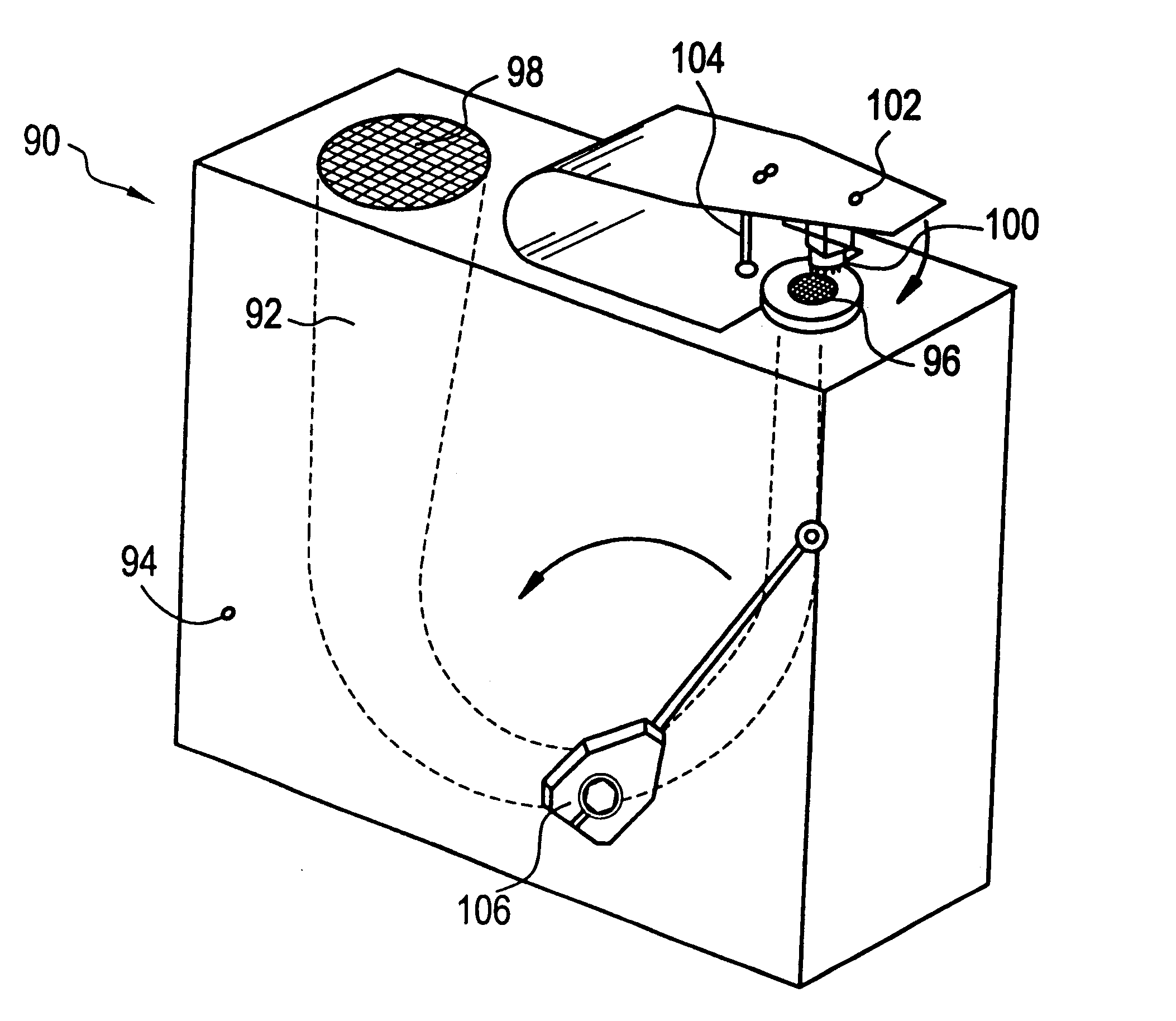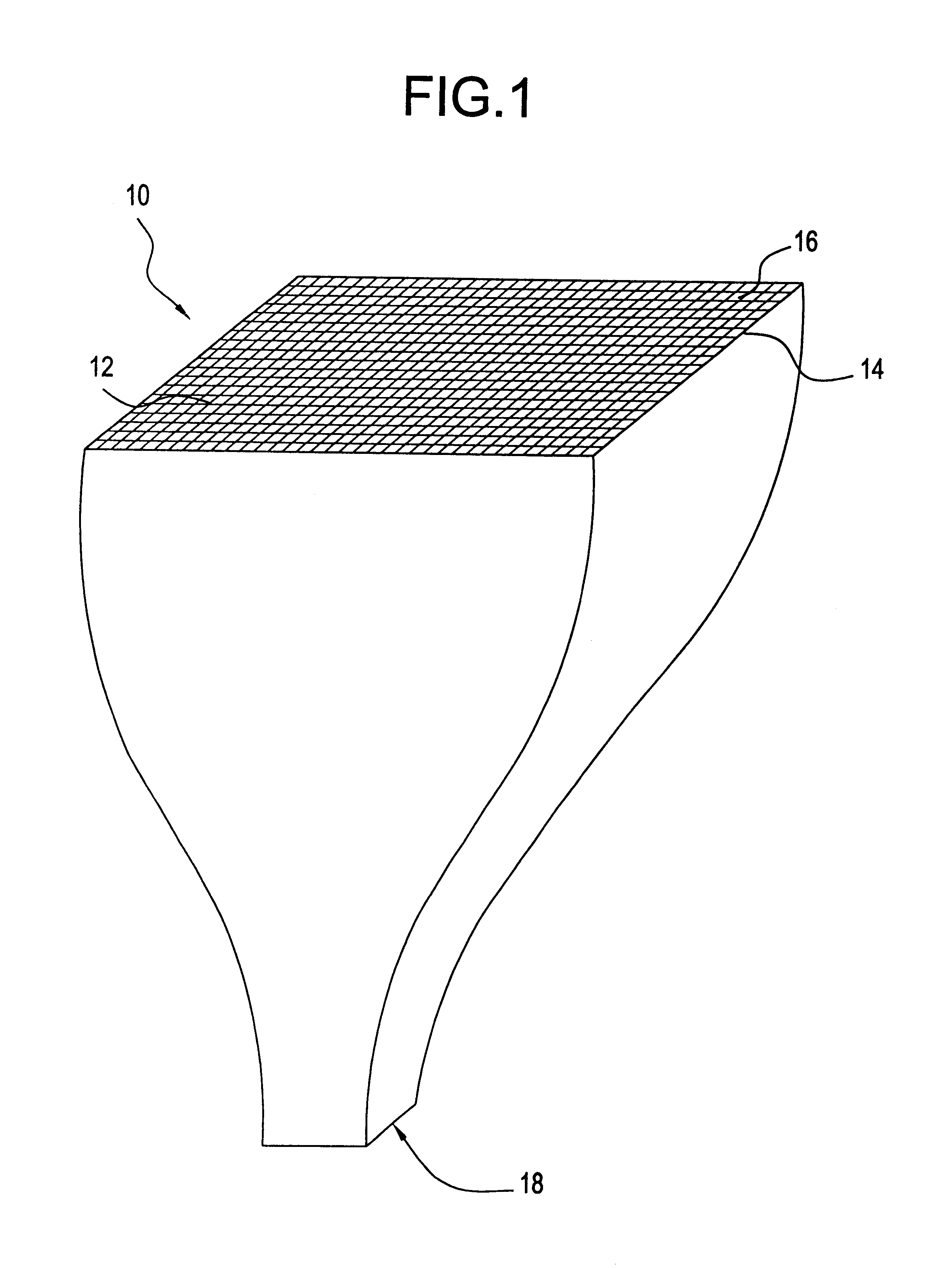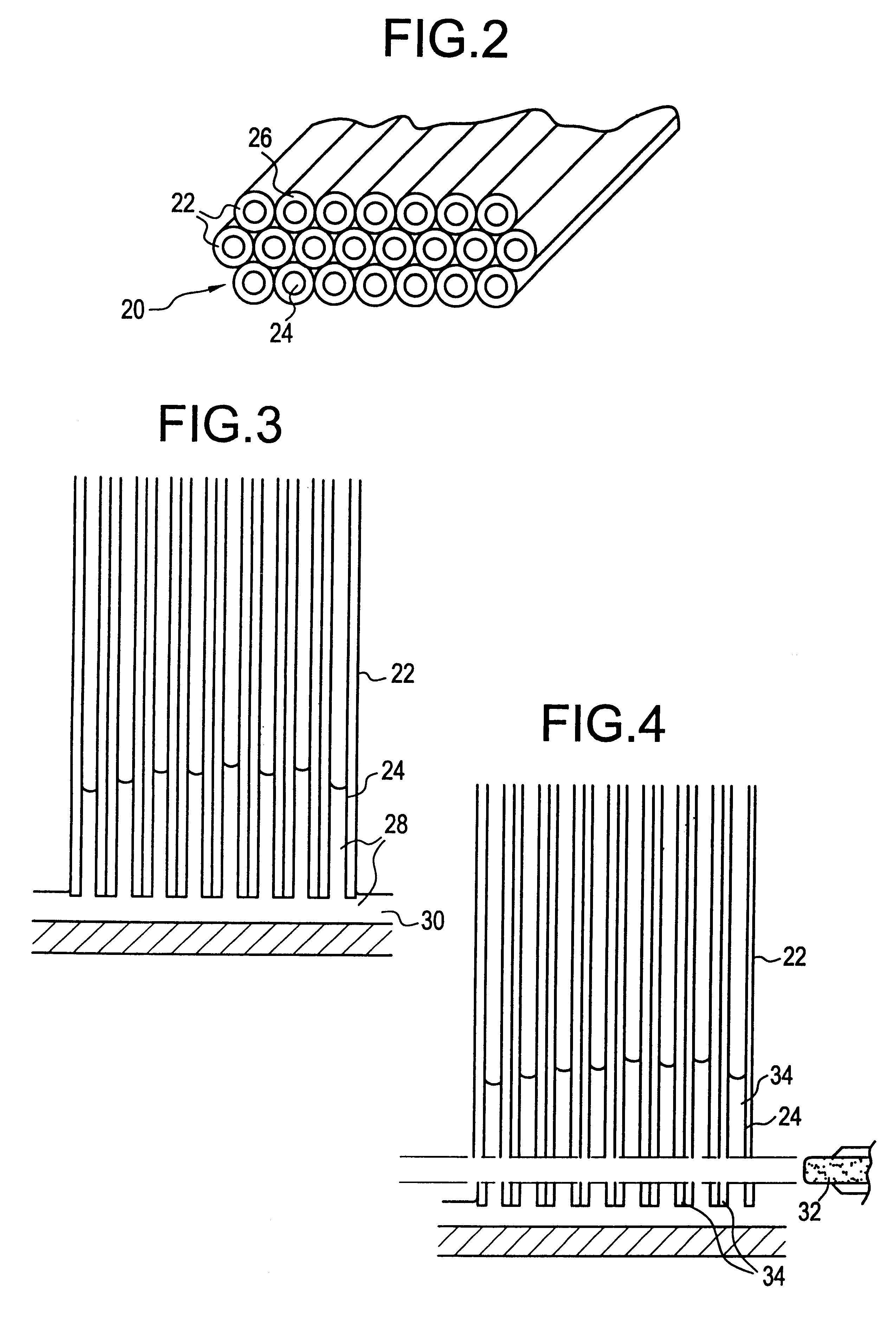Redrawn capillary imaging reservoir
a reservoir and capillary technology, applied in the field of redrawn capillary imaging reservoir, can solve the problems of limited printing process and limited density of arrays, and achieve the effect of uniform reduction of cross-sectional dimensions and areas, and constant present toleran
- Summary
- Abstract
- Description
- Claims
- Application Information
AI Technical Summary
Benefits of technology
Problems solved by technology
Method used
Image
Examples
Embodiment Construction
Table 1 shows the composition of PYREX 7761 glass. The inorganic powder is made from PYREX 7761 cullet: crushed, magnetically separated, ball milled (alumina), and ultrasonically screened (-325 mesh).
Table 2 shows the batch composition of the extrudable mixture.
The inorganic powder, the METHOCEL, and the Oleic Acid are blended together in a LITTLEFORD mixer, and then mulled together with the water addition in a LANCASTER mixer. The mix is then further mixed by evacuation and spaghetti extrusion (3 times). Finally, the batch is extruded through a die to be formed into a multi-celled preform which is cut from the extrudate, ready for sintering.
Table 3 shows the furnace schedule used to sinter the preforms. The preforms are vertically suspended during sintering to minimize bowing.
Once the preform is sintered, the resulting structure is heated and undergoes a redraw reduction. Redraw takes place approximately at approximately 20.degree. C. to 100.degree. C. above ...
PUM
| Property | Measurement | Unit |
|---|---|---|
| Volume | aaaaa | aaaaa |
| Force | aaaaa | aaaaa |
| Force | aaaaa | aaaaa |
Abstract
Description
Claims
Application Information
 Login to View More
Login to View More - R&D
- Intellectual Property
- Life Sciences
- Materials
- Tech Scout
- Unparalleled Data Quality
- Higher Quality Content
- 60% Fewer Hallucinations
Browse by: Latest US Patents, China's latest patents, Technical Efficacy Thesaurus, Application Domain, Technology Topic, Popular Technical Reports.
© 2025 PatSnap. All rights reserved.Legal|Privacy policy|Modern Slavery Act Transparency Statement|Sitemap|About US| Contact US: help@patsnap.com



